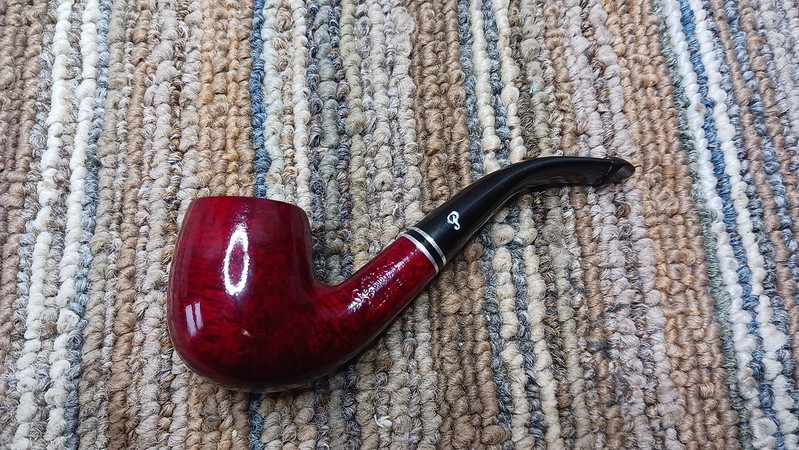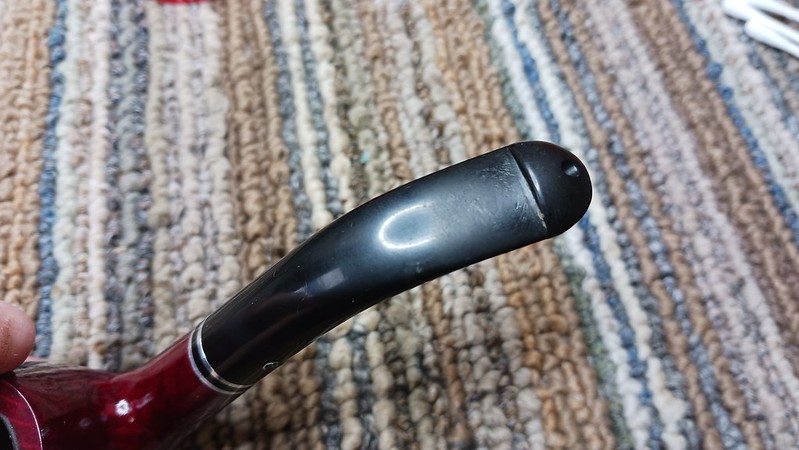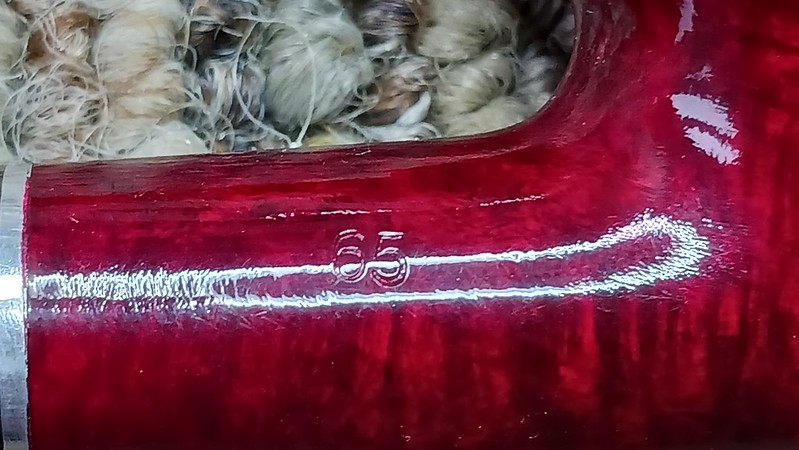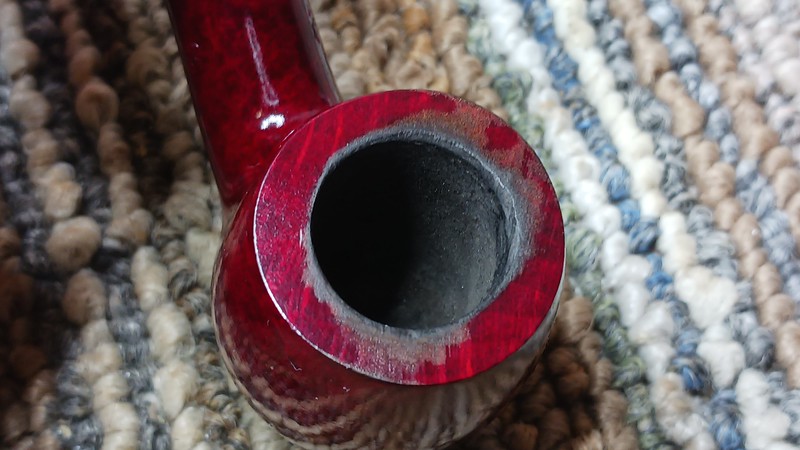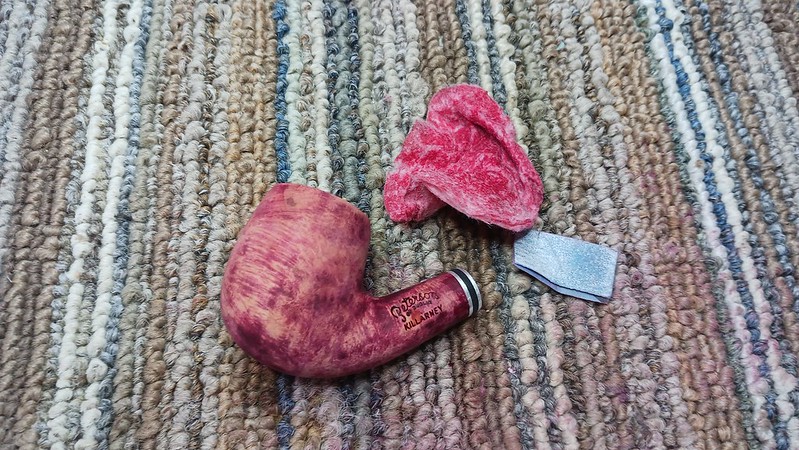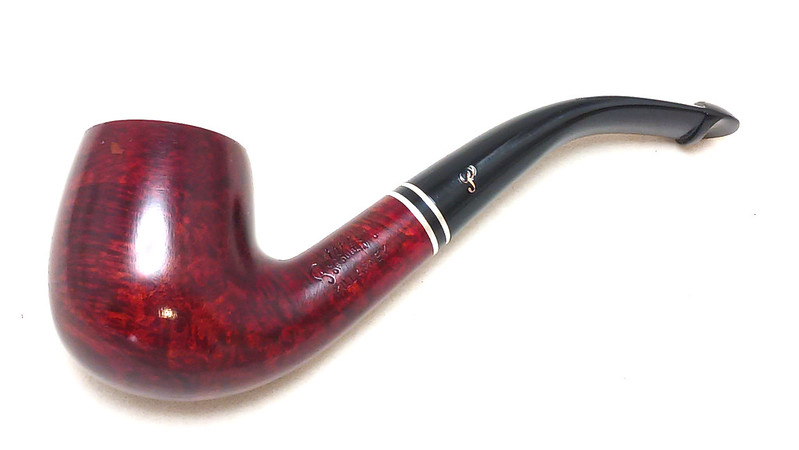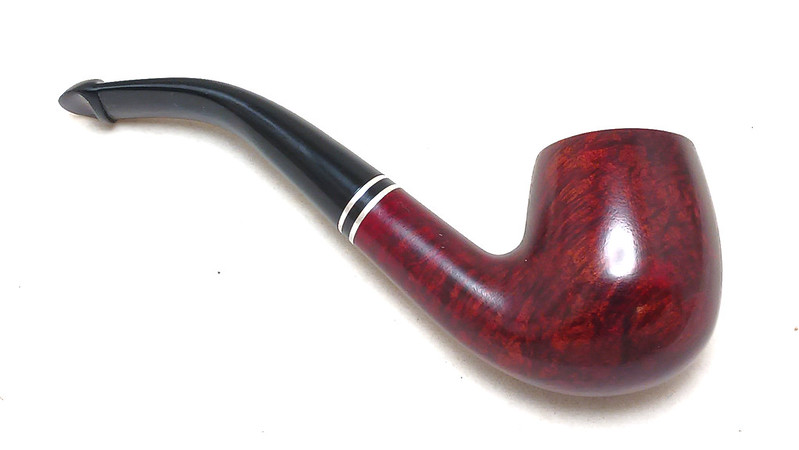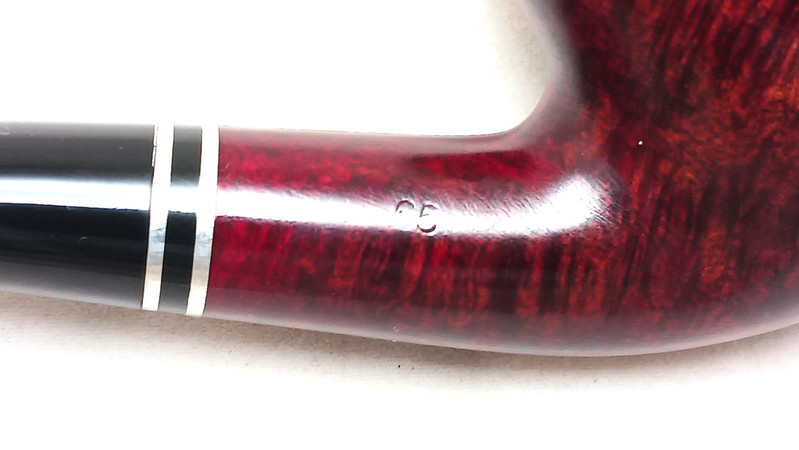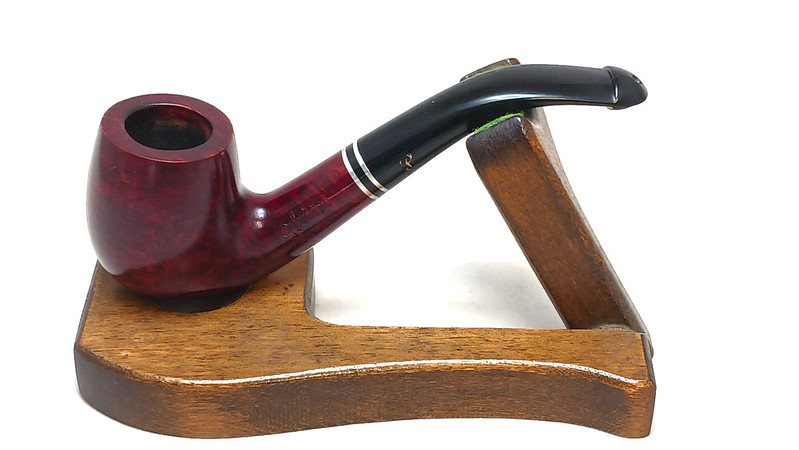Some pipe lovers really enjoy a shiny pipe, something that pipe makers have recognized for decades. One common way to provide a low-maintenance, high shine finish to briar pipes is to add a gloss topcoat over the colour coat during finishing.
While a topcoat maintains a pipe’s shine for quite a while, it inevitably begins to flake off from use. The briar and topcoat expand and contract differently due to changes in heat and moisture. This uneven movement eventually causes the clear coat to delaminate from the briar, usually starting at the rim where the pipe is subjected to higher heat from smoldering tobacco.
Such was the situation with the pipe on the bench today. This handsome Peterson Killarney 65 Bent Billiard arrived at the shop missing almost half of the finish from the rim. The pipe’s steward wanted this corrected and the pipe treated to a general cleaning and polishing. These pics, taken when the pipe arrived in the shop, show the condition.
The pipe is stamped “Peterson of Dublin” over “Killarney” on the left shank and “65” on the right shank. There is a stamped and filled Peterson “P” on the stem.
There was a time when this topcoat was made from varnish or lacquer, which can be removed relatively easily with either alcohol or acetone. Modern production pipes, however, typically finished with a polyurethane topcoat, are immune to solvents, meaning that when the coating begins to flake off the pipe, the only solution is a lot of careful hand sanding.
A quick pair of test wipes with alcohol and acetone confirmed that the gloss coat was, in fact, urethane based, so I assembled my sanding supplies and had another good look at the stummel.
This close shot below shows the state of the rim. There are some smears of carbon spreading outwards from the inner rim, but you can also plainly see where the gloss coat has flaked off, exposing the much flatter looking briar underneath.
A major concern when working on any pipe is the preservation of the stamps as they provide the pipe’s provenance – brand, line, shape, and often at least some indication of the pipe’s era of manufacture. On glossy pipes, the stamps are sometimes added after the topcoat is cured instead of before final finishing. This creates a risk that the stamp is completely within the thickness of the gloss topcoat only and not in the briar itself. Removing the topcoat can, therefore, remove the stamps without sanding into the briar. I would need to proceed carefully.
As always, I began by cleaning the pipe. In this case, the pipe proved to be very clean already – a nice surprise!
With the cleaning done, I settled in with various grades of sandpaper and a respirator to avoid breathing in the dust generated by the removal of the gloss topcoat. It took about 30 minutes to achieve the results seen below. I periodically wiped down the stummel with 99% isopropyl alcohol during the sanding, both to remove the sanding dust and to evaluate my progress. Shiny patches showed where more sanding was needed, while red dye on the cotton pad indicated that I was now working on the surface of the briar itself.
When I was satisfied that all of the urethane topcoat had been removed, I gave the stummel a final wipe-down with alcohol before scrubbing the briar with some 0000 steel wool. This smoothed out the finer sanding marks, prepping the briar for refinishing.
The Killarney line is known for its deep red colour. To reproduce the original look, I applied a coat of Oxblood leather dye followed by the slightly darker red of Mahogany dye.
I allowed the dye to dry then buffed off any excess with a bit of old terry towel. A wipe of mineral oil helped set the new colour and inject some moisture into the briar.
Then it was time to take the refinished pipe to the buffer for a run on the Red Tripoli and White Diamond wheels. I buffed both bowl and stem as a unit to avoid rounding the crisp edge of the stem face.
After buffing away the last of the sanding marks and smoothing out some of the handling marks on the stem, I applied a few light coats of Carnauba wax to the pipe to give it a glossy finish. The wax finish will not last as long as the original urethane topcoat, but it is easily renewed and will not flake off in patches. The wax finish also allows the briar grain to show through the finish.
This Peterson Killarney has come a long way during its time on the bench. Already in good condition, the replacement of the peeling gloss topcoat with a more natural Carnauba wax finish has given the pipe a timeless look that showcases the briar rather than the urethane finish. With the occasional refresh of the wax, this Killarney should serve its steward well for many trouble-free years to come.
Thanks for joining me for this estate pipe refinishing project. I really enjoyed watching the transformation of this Peterson Killarney; I hope you did too.
Until next time, Happy Piping! Here’s the finished pipe.


